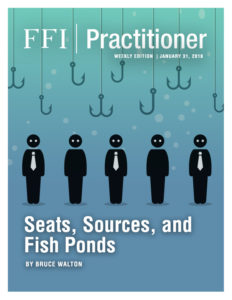
View this edition in our enhanced digital edition format with supporting visual insight and information.
When confronted with the need to go outside the family company for new leadership, most families have no idea what that process entails and how to go about it. This case study will help advisers guide clients wrestling with such an issue and recognize the value of resources available to help. Thanks to Bruce Walton of Battalia Winston for the article and case study.
Much is written about succession planning. But what happens when the family CEO dies in the saddle with no identified successor? Here is a case of a $90 million founder-managed business that went through this unfortunate situation and how it ultimately was resolved.
Case Study
Our client was a first-generation private business where the founder died in the middle of a divorce dispute. The estate continued the dispute for a number of years. An ESOP was set up to protect employees while long-term management continued to run the company, but it really treaded water for a number of years in their technology-based industry. When we got involved the financial trends were all negative. The governance resolution included a small outside board that represented the ESOP, the family, and its trusts, but it had no knowledge of the industry. The family was committed to continuing family ownership and had a pragmatic view of the founder’s values of product excellence and outstanding customer service.
Approach
The strategy to right the ship had three components, once the board decided to change leadership:
First, bring in multiple types of expertise. These included:
- A recruiter who had some experience in the industry, broadly defined, at the CEO recruiting level
- A compensation consultant who pegged the market and crafted an appropriate LTIP (Long-Term Incentive Plan)
- A psychological testing resource who could evaluate the existing team and finalist candidates for fit and potential
Second, thoroughly comb the relevant marketplace. Good search combines strategy, targeted networking, and fundamental research.
- Identify multiple Fish Ponds to be explored. These are high level concepts, for instance, industry niches or other related industries with common characteristics such as customers or business processes. This often includes “good athletes” in the geographic area. Part of this effort is identifying target companies within each pond.
- Identify Sources who can identify the best, attractable fish in each pond. These might include industry association officers and senior alumni of target companies.
- Identify the people within target companies who sit, or have sat, in the most appropriate and relevant Seats.
Third, develop criteria to be evaluated including the key management competencies for success and must-haves vs. nice-to-haves. A prioritized competency model becomes a key input for discussions with sources and for grading candidates. That dovetailed with psychological testing that gave another rigorous view of candidates’ personal balance sheets. In this case the client used Caliper and a consultant who was familiar with it in the recruiting context. The test was administered to key executive team members who expected to stay with the company and to two finalists.
The tools linked what the board felt was most important with candidates’ profiles, taking the discussion beyond, “I like or don’t like the candidate.”
Caliper helped the board select the ultimate winner from two strong finalists.
These tools also helped the incoming CEO understand what resources he or she would have to play with and where to bring in new blood.
Results
A new CEO was hired in about four months. The chairman, a son of the founder, commented that the successful candidate reminded him the most of his father’s values and spirit. Even though we knew some good candidates at the beginning of the search from prior, relevant searches, fundamental research (Seats) turned up the best candidate. The new CEO got everyone involved, demonstrated respect for all players (both in public and in private), removed obstacles to success and re-energized the founder’s values. Consistent with the board’s prior expectation, the CEO quickly brought in a vice president of commercial operations from the industry, along with a couple of other senior staff. Key “keepers” were rewarded with career development training. Within 18 months, trends were reversed (booking rates up 50%) and a new niche strategy had been created that embodied substantial opportunity.
Observations
- Be thorough, recognize where you need help and assemble a team that can work together.
- Identify the tools that can help and use them in a disciplined way.
- Recognize the time value of inaction. Problems don’t fix themselves — leadership, discipline, and energy do.
As always it takes a village to support a family company in distress.
About the contributor
 Bruce H. Walton is a partner in the Boston office of Battalia Winston. A co-leader of the Family-Owned Business Practice, he has more than 30 years of executive search experience and primarily recruits CEOs and their direct reports. Bruce can be reached at bwalton@battaliawinston.com.
Bruce H. Walton is a partner in the Boston office of Battalia Winston. A co-leader of the Family-Owned Business Practice, he has more than 30 years of executive search experience and primarily recruits CEOs and their direct reports. Bruce can be reached at bwalton@battaliawinston.com.
About Battalia Winston
Battalia Winston is an executive search firm that has been helping companies—from early stage to Fortune 500 companies—find and retain top executives for more than 50 years.

View this edition in our enhanced digital edition format with supporting visual insight and information.





